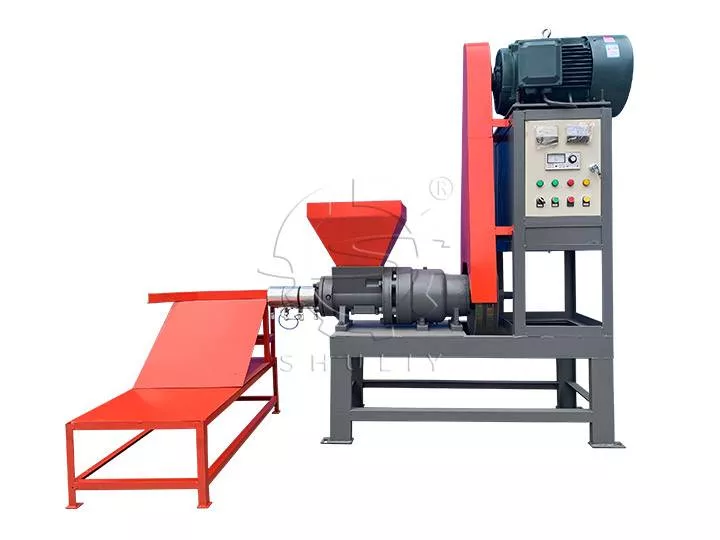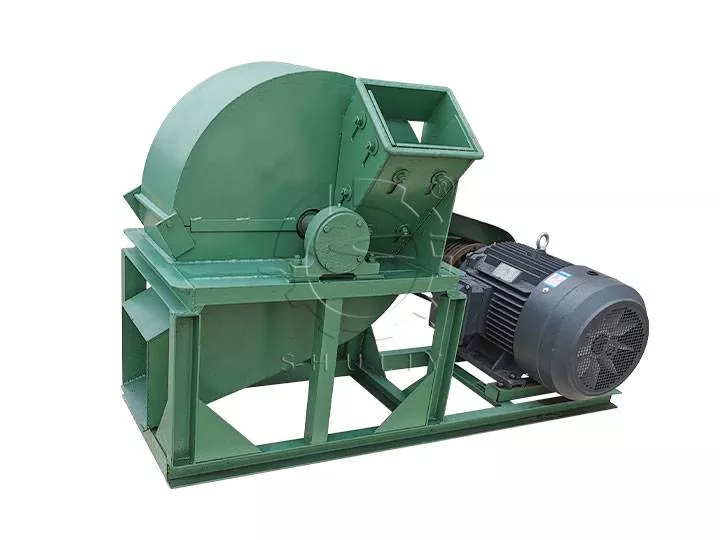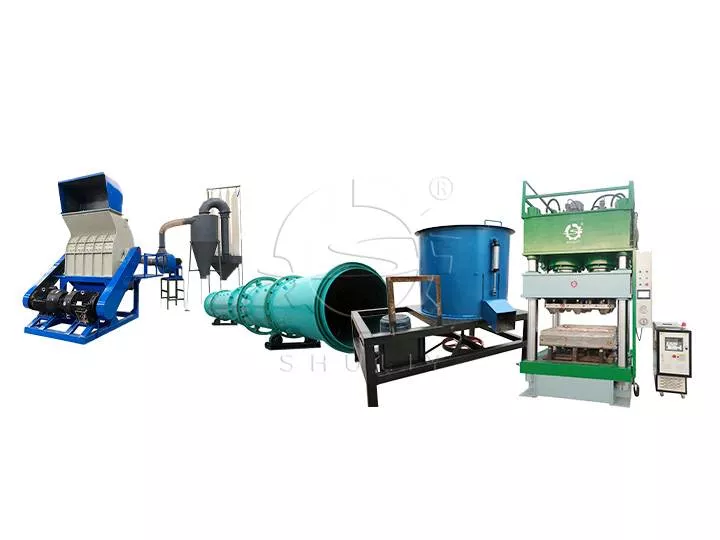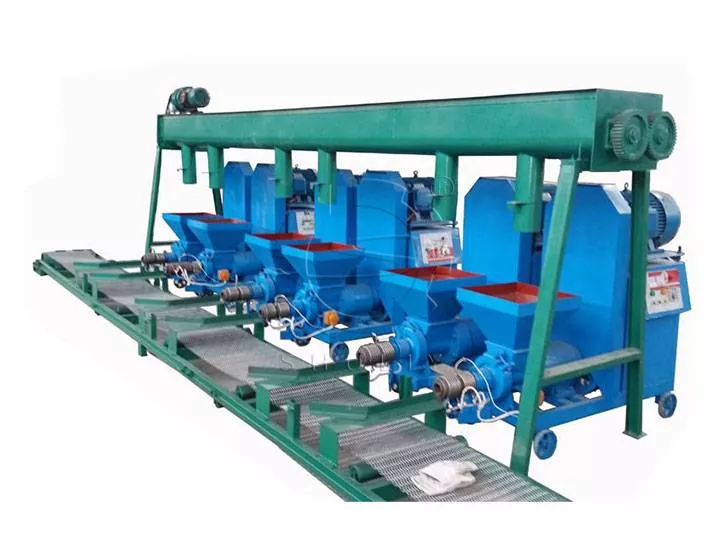ما هي أفضل المواد الخام لصنع قوالب الفحم؟
يؤثر اختيار المواد الخام لقوالب الفحم بشكل كبير على أداء الاحتراق. يمكن استخدام الكتل الحيوية المختلفة لإنتاج الفحم، بما في ذلك البلوط، وخشب الفاكهة، وقشر الأرز، ورقائق الخيزران، وقذائف الفاكهة، ونشارة الخشب، وسيقان المحاصيل، وتفل قصب السكر، وغيرها.
ومع ذلك، من المهم ملاحظة أن جودة الفحم المنتج من مواد خام مختلفة، حتى في ظل نفس الظروف، يمكن أن تختلف. إذن، ما هي أفضل مادة خام لصنع الفحم؟
أحد العوامل الرئيسية في تقييم جودة فحم الكتلة الحيوية هو محتواه من الرماد. ويعني انخفاض محتوى الرماد عددًا أقل من الشوائب أثناء الاحتراق، مما يؤدي إلى أداء أفضل للاحتراق. ولذلك، فإن اختيار المواد الخام ذات المحتوى المنخفض من الرماد أمر بالغ الأهمية.

فوائد قشرة جوز الهند
تعتبر قشرة جوز الهند من النفايات الطبيعية المتوفرة بكثرة في المناطق الاستوائية بشكل خاص. إن هيكلها المميز من الألياف ومحتوى الرماد المنخفض يجعلها خيارًا ممتازًا لقوالب الفحم. يتراوح محتوى الرماد في قشر جوز الهند عادةً من 2% إلى 5%، وهو أقل بكثير من محتوى العديد من أنواع الخشب الأخرى.
تسمح هذه الخاصية لفحم قشور جوز الهند بأن يحترق بشكل أنظف، ويوفر قيمة حرارية أعلى، ويدوم لفترة أطول. بالإضافة إلى ذلك، يضفي فحم قشور جوز الهند نكهة فريدة على طرق الطهي مثل الشواء. يمكننا أن نقدم لك حلولاً لصنع الفحم من قشور جوز الهند. (اقرأ المزيد: دليل شامل حول كيفية صنع فحم قشور جوز الهند: نصائح وحيل للنجاح>>)

إمكانات نشارة الخشب
نشارة الخشب هي منتج ثانوي لمعالجة الأخشاب وهي غنية بالألياف الخشبية وتحتوي على نسبة منخفضة من الرماد. مثل قشور جوز الهند، تحتوي نشارة الخشب عادةً على محتوى رماد يتراوح من 3% إلى 6%، مما يجعلها مادة خام ممتازة لإنتاج قوالب الفحم.
من خلال الخضوع لعمليات مثل السحق، والتجفيف، وصنع القضبان، والتفحم، يمكن تحويل نشارة الخشب إلى قوالب فحم ذات ملمس ناعم وأداء حرق متميز.
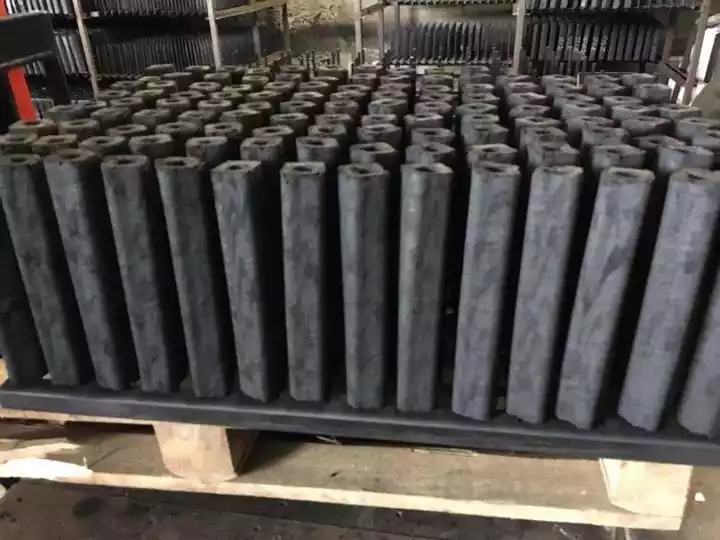
المزايا على المواد الأخرى
إن فوائد استخدام قشر جوز الهند ونشارة الخشب مقارنة بأنواع الأخشاب الأخرى، خاصة فيما يتعلق بمحتوى الرماد، واضحة. على سبيل المثال، يمكن أن تحتوي بعض الأخشاب الصلبة مثل البلوط أو الصنوبر على محتوى رماد يتجاوز 10%، مما قد يؤثر على كفاءة حرق الفحم. ونتيجة لذلك، ظهرت قشور جوز الهند ونشارة الخشب كمواد مفضلة لإنتاج الفحم عالي الجودة.
استغلال الموارد المتجددة
بالإضافة إلى أدائها الممتاز في الاحتراق، توفر قشور جوز الهند ونشارة الخشب فوائد كونها متجددة وسهلة الوصول إليها وفعالة من حيث التكلفة. قشور جوز الهند وفيرة في المناطق الاستوائية، بينما تعد نشارة الخشب منتجًا ثانويًا نموذجيًا لصناعة معالجة الأخشاب. إن استخدام هذه المواد المهدرة لإنتاج الفحم لا يساعد فقط في تقليل التلوث البيئي، بل يعزز أيضًا إعادة تدوير الموارد!

